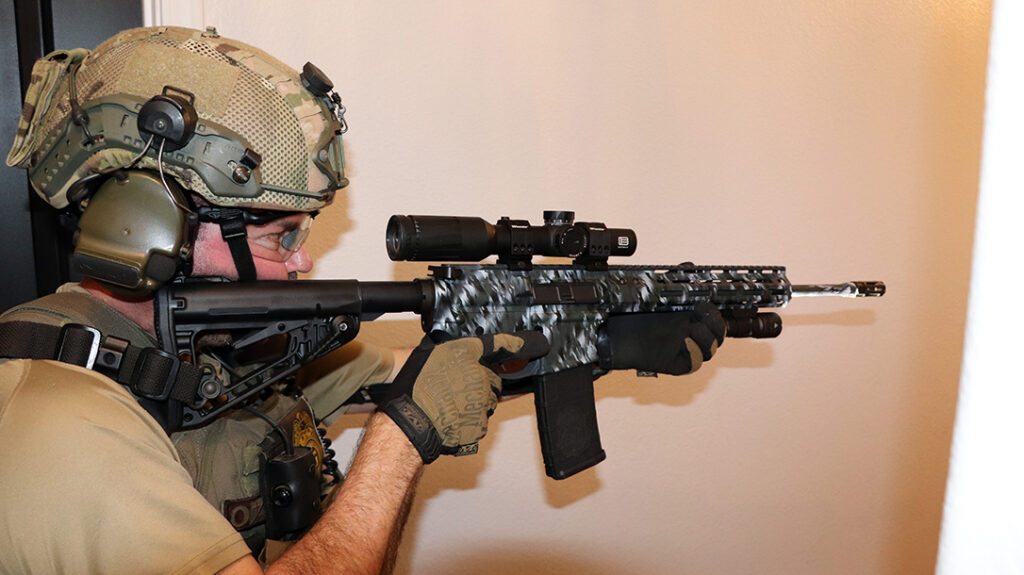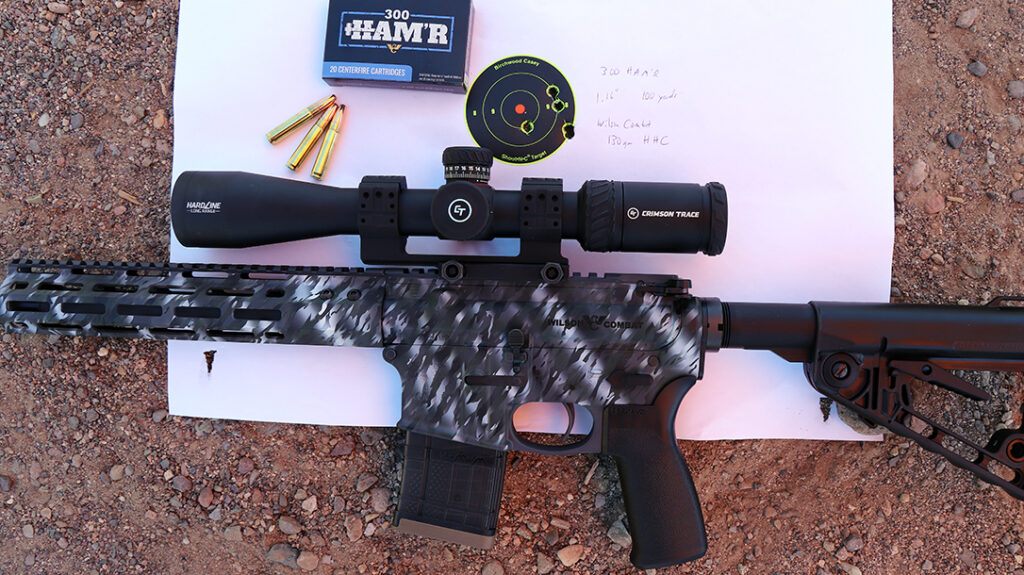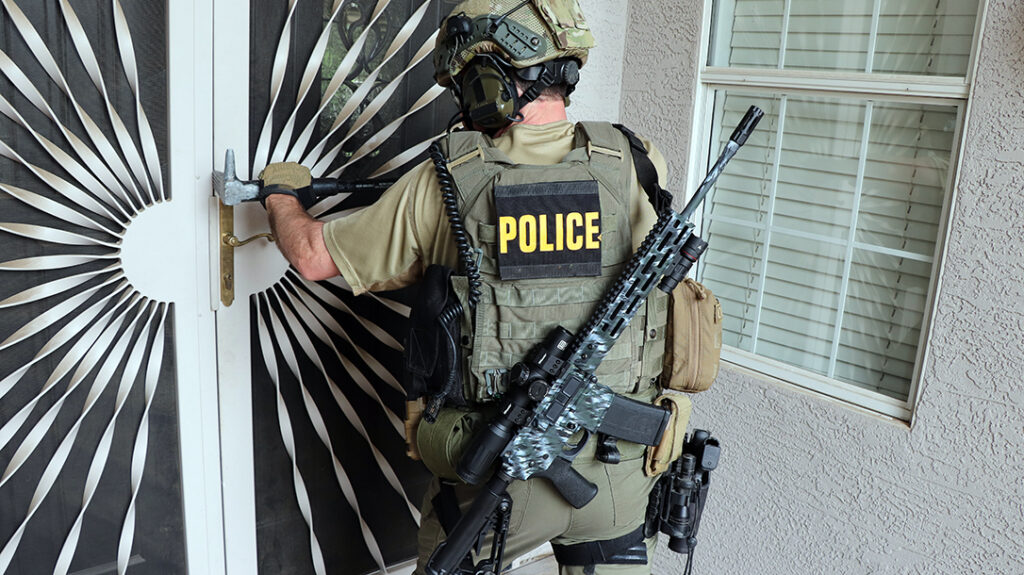I remember reading an article in a car magazine when I was a kid. They took apart 10 identical Japanese cars and 10 identical American cars and then measured parts of the engines to see what was within tolerance. The engine parts in the American car were all within tolerance, but when they started measuring the parts in the Japanese car they thought their equipment was broken. The parts weren’t just within tolerance, they were identically sized down to the thousandth of an inch. I’m not saying Japanese cars are better than American, I am simply saying that for some companies, “good enough” isn’t in their vocabulary. Their goal is perfection, and anything short of that needs improvement.
Wilson Combat Tactical Ultralight
As a gun writer, I get to shoot hundreds of different guns every year at different events, most of which I never write about. But with that exposure, you learn a few things about quality. AR-15s have become America’s rifle and most of them run like a clock, but they are far from all being the same. For example, you can tell a lot about an AR simply by where it ejects the empty brass. Cheaper guns will run fine, but the empty cases fly all over the place. The better the quality, the more consistent the ejection.
I recently tested Wilson Combat’s Tactical Ultralight rifle in 300 HAM’R. While I was doing the bench-rested accuracy portion of the test, I kept hearing brass hit the five-gallon bucket we use to pick up the empty cases at the end of a session. I looked over and, purely by luck, I had left the bucket about 6 feet to my right and slightly behind me. It was catching some of my empties. I moved the bucket over six inches and after that, over 75% of the empty cases landed inside.
Advertisement — Continue Reading Below
While that is an interesting story, it doesn’t tell you that the Tactical Ultralight is an amazing rifle. It does tell you that it is an amazingly well-built rifle. Tolerances are exact. Nothing is sloppy. Nothing is left to chance. It functions exactly the same, every time. Try getting the empties ejecting from your AR to land in a five-gallon bucket and get back to me. Was I surprised? Initially, yes, but then I remembered I was shooting a Wilson Combat. I expect that type of perfection from WC. Bill Wilson and his employees built their reputation for incomparable quality over decades and it is hard earned.

Drilling Down on Tactical
The Tactical Ultralight is almost identical to the Ultralight Hunter, which I have shot many times. First, it is ultralight and well-balanced for fast movement. The Hunter is 5 pounds, 2.5 ounces. The Tactical is 5 pounds, 9 ounces. The extra weight is primarily from the collapsible stock. The Hunter has a fixed, carbon-fiber buttstock. I love it when hunting hogs, but it is one size fits all. Someone who is very tall or short might not be as pleased.
Advertisement — Continue Reading Below
Anyone who calls their rifle “tactical” has to assume the shooter may be wearing body armor, and that means you need a gun with an adjustable-length stock. Plus, a lot of people simply prefer that feature so they can find the sweet spot where the gun fits them best. The other difference is the Tactical Ultralight has a Q-COMP muzzle brake, while the Ultralight Hunter just has a threaded barrel with a thread protector. Because the 300 HAM’R uses a .30-caliber bullet, the barrel threading is 5/8” x 24.
Other than that, the two models have identical features. The Tactical Trigger Unit is a two-stage trigger with an ultra-short, ultra-light take-up, then breaks clean. The skeletonized bolt carrier is nickel boron coated for lubricity and easy cleaning. The thin, 10.5-inch forend has Picatinny down the top and M-LOK on seven sides. A short piece of Picatinny and a QR sling mount that both attach to MLOK are included with the gun. There is no forward assist on the upper receiver. I like having a forward assist because I have had rifles where after you do a press check by pulling the bolt slightly to the rear, the bolt would not fully go back into battery.
However, Eugene Stoner said the gun did not need it and if something like that happened, you could simply put your thumb through the ejection port and push forward on the large notch on the side of the bolt carrier group. Problem solved. I tried getting the Ultralight Tactical to stay slightly out of battery when I did press checks, but it always went right back in without assistance. I guess when you make things right, you really don’t need a forward assist.
Advertisement — Continue Reading Below

Lightweight Package
So why do you need an Ultralight Tactical rifle? Because after you put a light, a sling and at least a red dot, if not a LPVO scope on it, it isn’t ultralight anymore. And if you are doing room clearings, sooner or later you end up being the person who blocks a hallway or the stairwell while the rest of the house is being cleared. Guns get heavy. An M4A1 starts life weighing over 7½ pounds, and that is with a 14 ½-inch barrel. The fact that the Tactical Ultralight shaves a third of that weight off is significant. No one carrying a gun long term ever says, “I wish this thing weighed more.”
The rifle is available in 5.56, 300 Blackout, and 300 HAM’R. Why did I chose 300 HAM’R? Because a tactical rifle for home defense or room clearing doesn’t need to be able to shoot out past 300 yards, but based on my experience of a few decades in federal law enforcement and studying countless shootings, it helps to hit harder than a 5.56mm. The 300 HAM’R is significantly more powerful than 300 Blackout, has relatively mild recoil, and it still comes in the AR-15-size platform. The gun I tested has a custom, gray base, Armor-Tuff Tiger Stripe camo pattern and looks really sharp, too. It is nice to have a good looking rifle, but Wilson Combat’s reputation isn’t based on looks. It’s based on decades of building firearms with tolerances like a Swiss watch.
Advertisement — Continue Reading Below
For more information see wilsoncombat.com.

Wilson Combat Tactical Ultralight Specs
- Caliber: 300 HAM’R
- Modes of Fire: Semi-Automatic
- Barrel Length: 16 inches
- Barrel Type: Ultralight Hunter Profile, Match-Grade Barrel
- Twist Rate: 1:15
- Barrel Material: 416R
- Sight/Gas Block: Low-Profile Gas Block
- Muzzle Device: Q-COMP
- Handguard: WC M-LOK Rail
- Weight Empty: 5 pounds, 9 ounces
- Overall Length: 33.25 inches
- Fire Control Group: WC Tactical Trigger Unit
- Trigger Weight: 3 pounds, 3 ounces; Average of 10 on Lyman Electronic Trigger Gauge
- Capacity: 30+1
- Buttstock: Rogers Super-Stoc
- Pistol Grip: Mission First Tactical Grip
- Action: Direct Gas Impingement
- MSRP: $2,150
| Load | Velocity Average | Accuracy Average | Accuracy Best |
| Lehigh 125 gr CC | 2490 fps | 1.25 in | 1.18 in |
| Lehigh 115 gr TME | 2525 fps | 1.32 in | 1.21 in |
| Lehigh 115 gr TXC | 2512 fps | 1.49 in | 1.39 in |
| Wilson Combat 130 Gr HHC | 2491 fps | 1.40 in | 1.16 in |
Advertisement — Continue Reading Below























